In this double exposure, a female firefly (foreground) responds to a nearby male flashing in the grass. Fireflies communicate through light, using species-specific flash patterns to attract mates during the summer. The male and female continue a “flash dialogue,” a call-and-response pattern, until the male finds her in the dark. (Photos by Anna Miller/Animalia Podcast)
Fireflies aren’t all sweetness and light…they also have a dark side too!
Renowned firefly researcher Sara Lewis and PhD student Avalon Owens discuss all things lightning bugs, including surprising backstories of predation, toxins, and deception. Turns out, there’s a lot more going on in our backyards than we think!
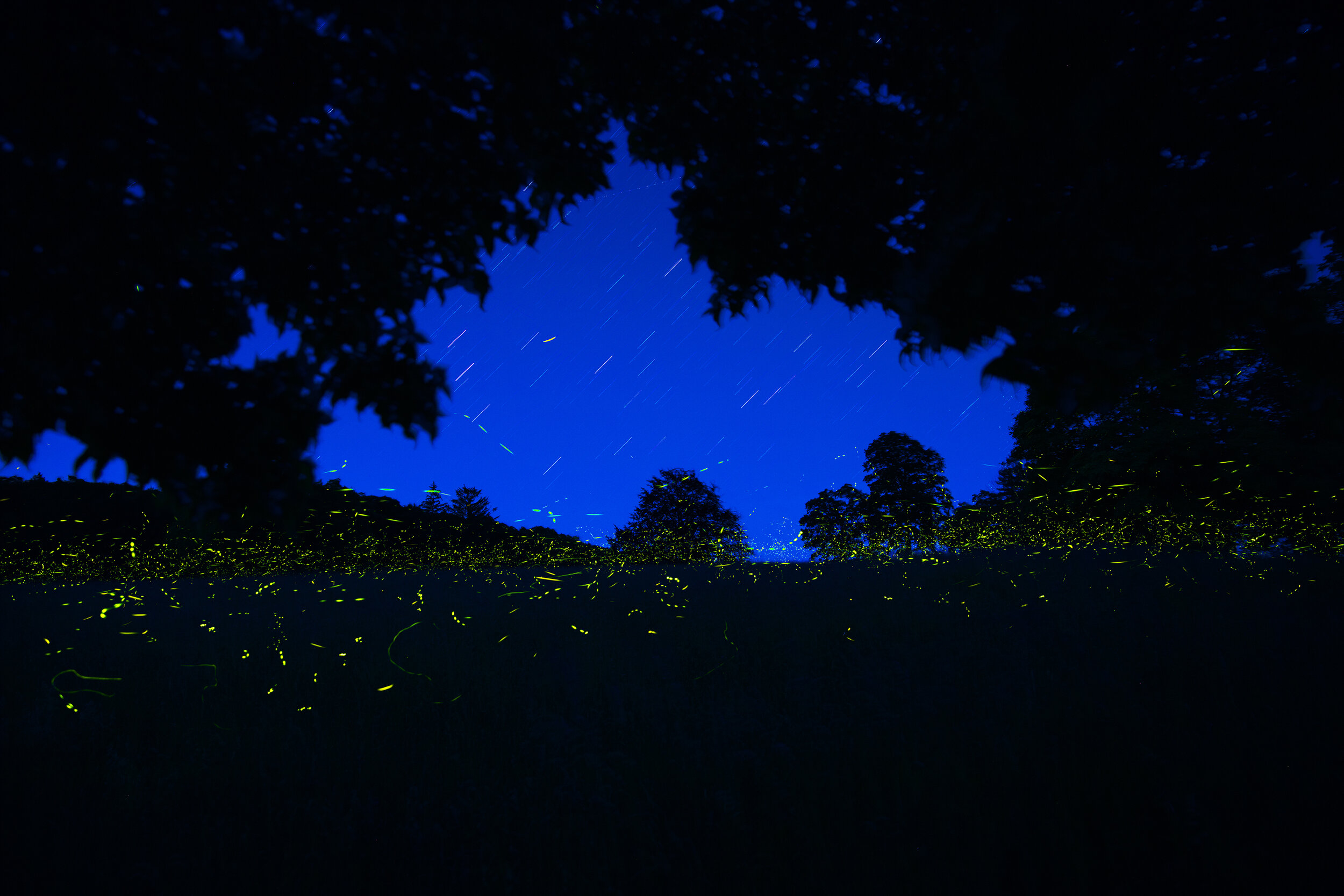
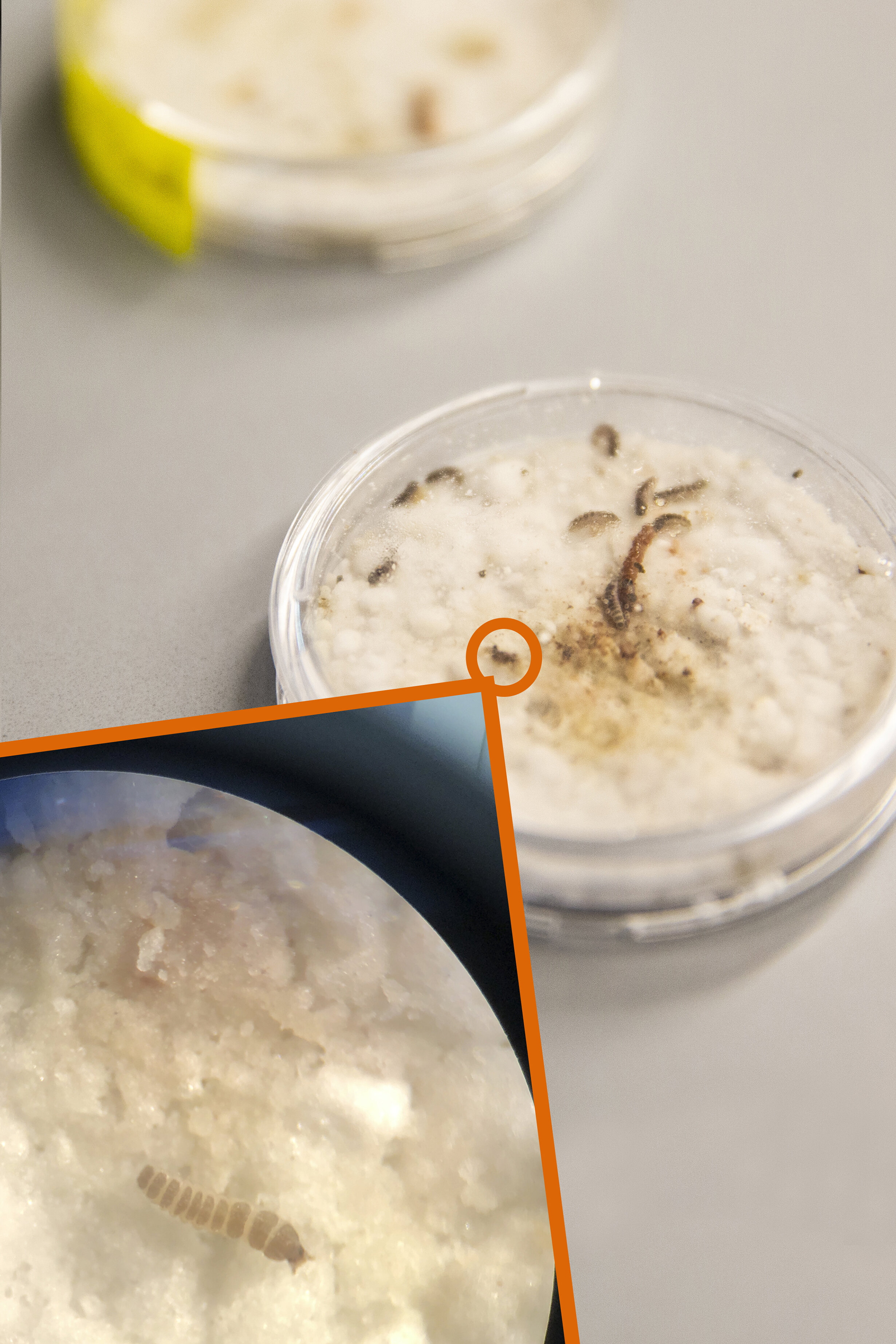

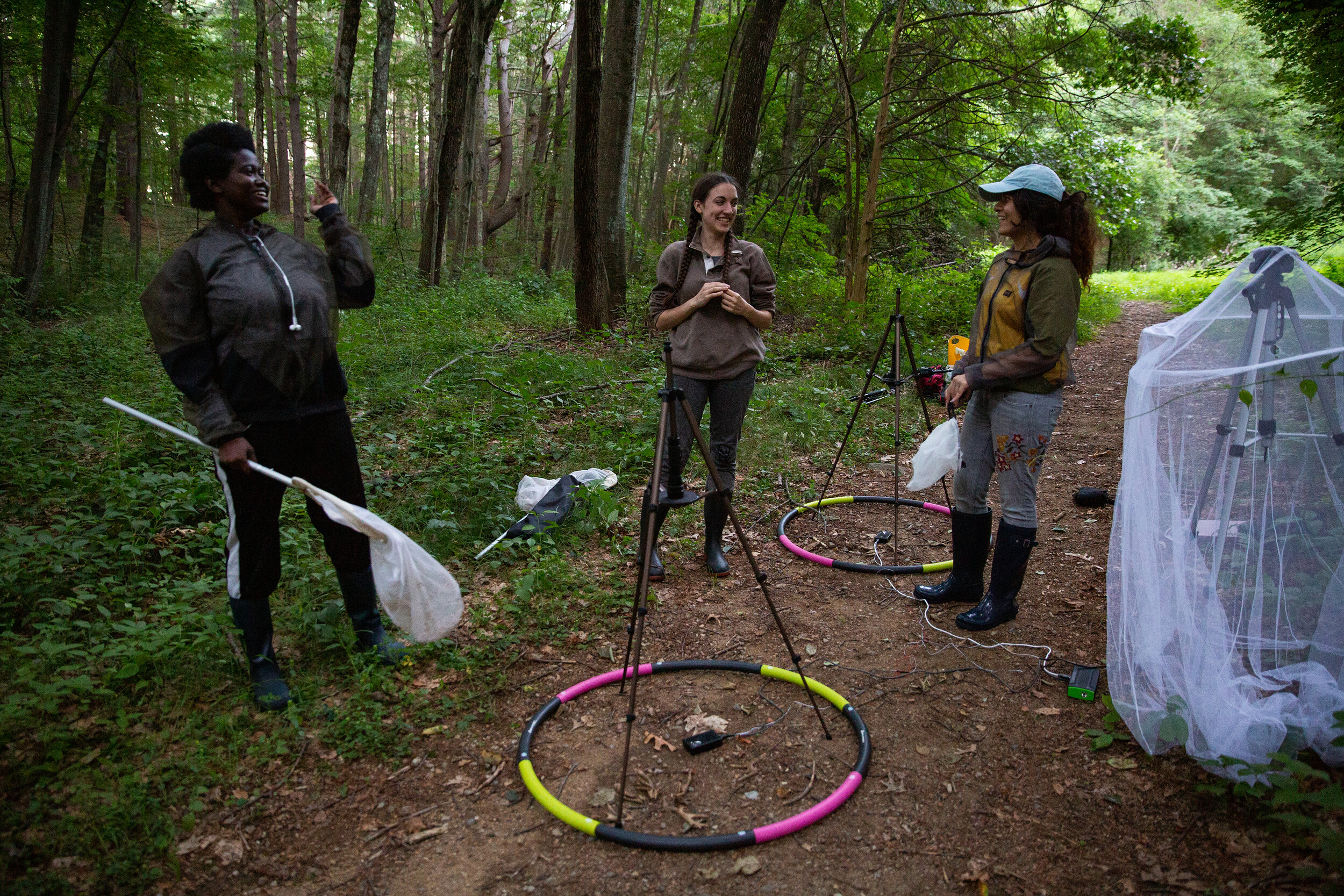

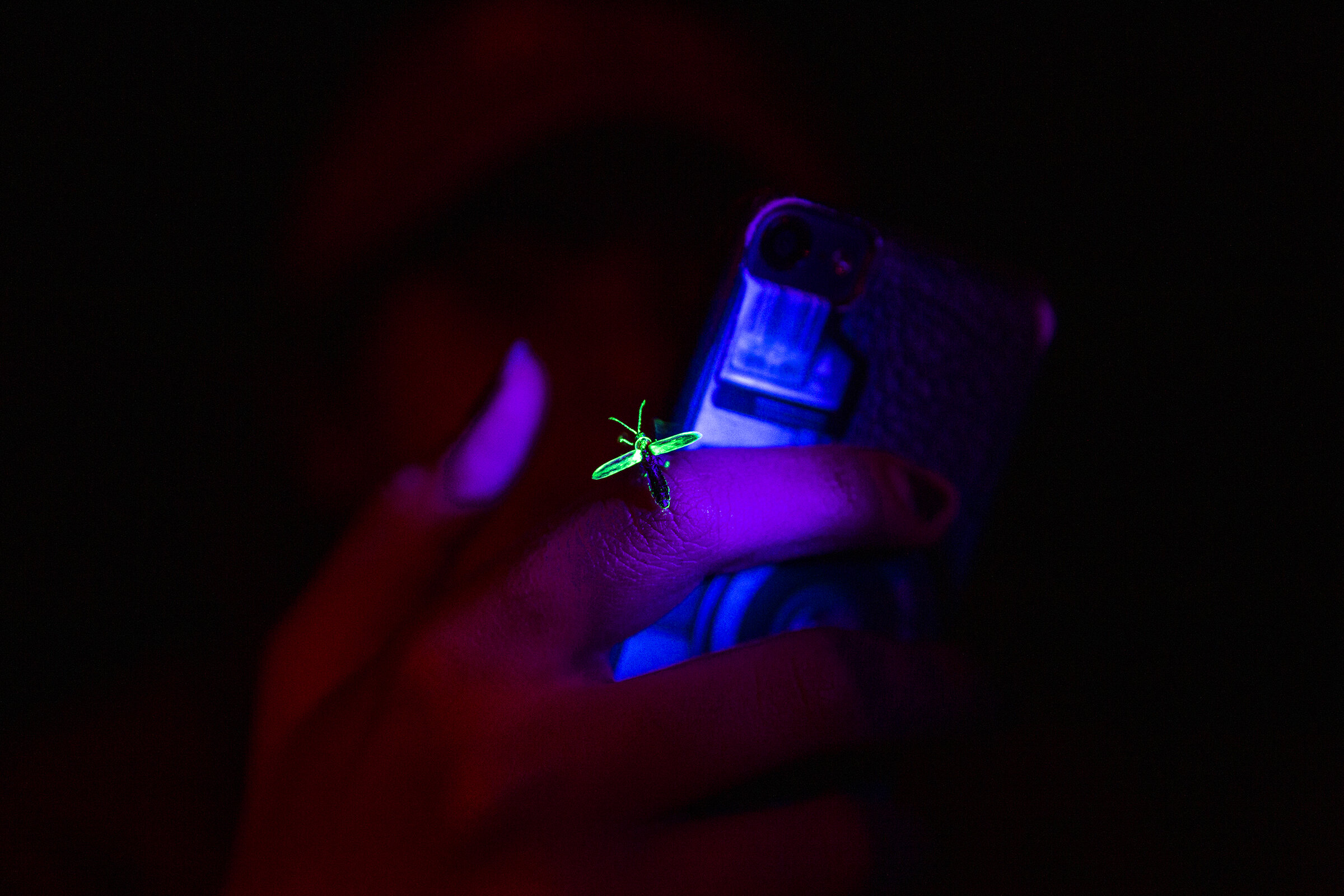
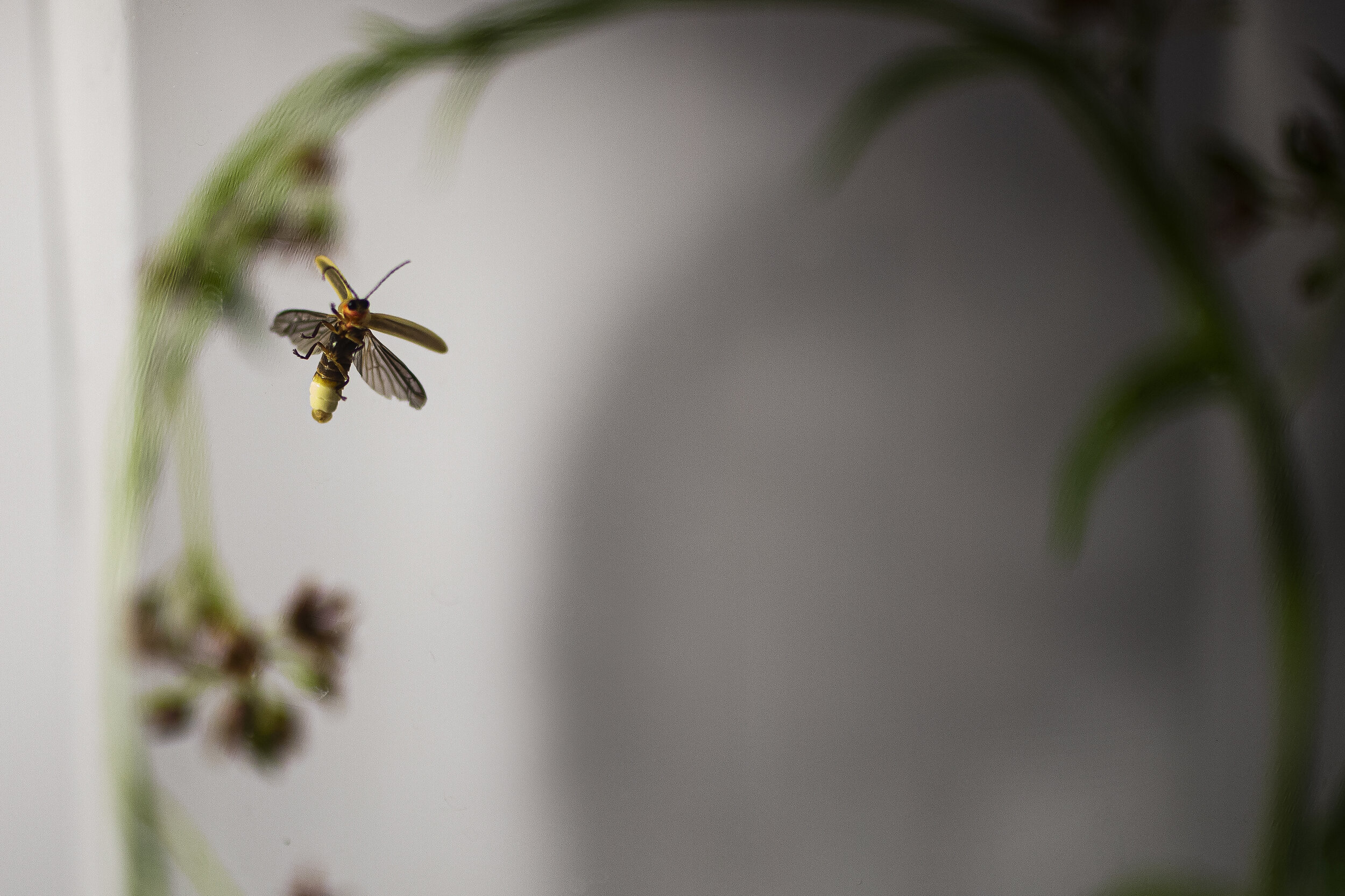
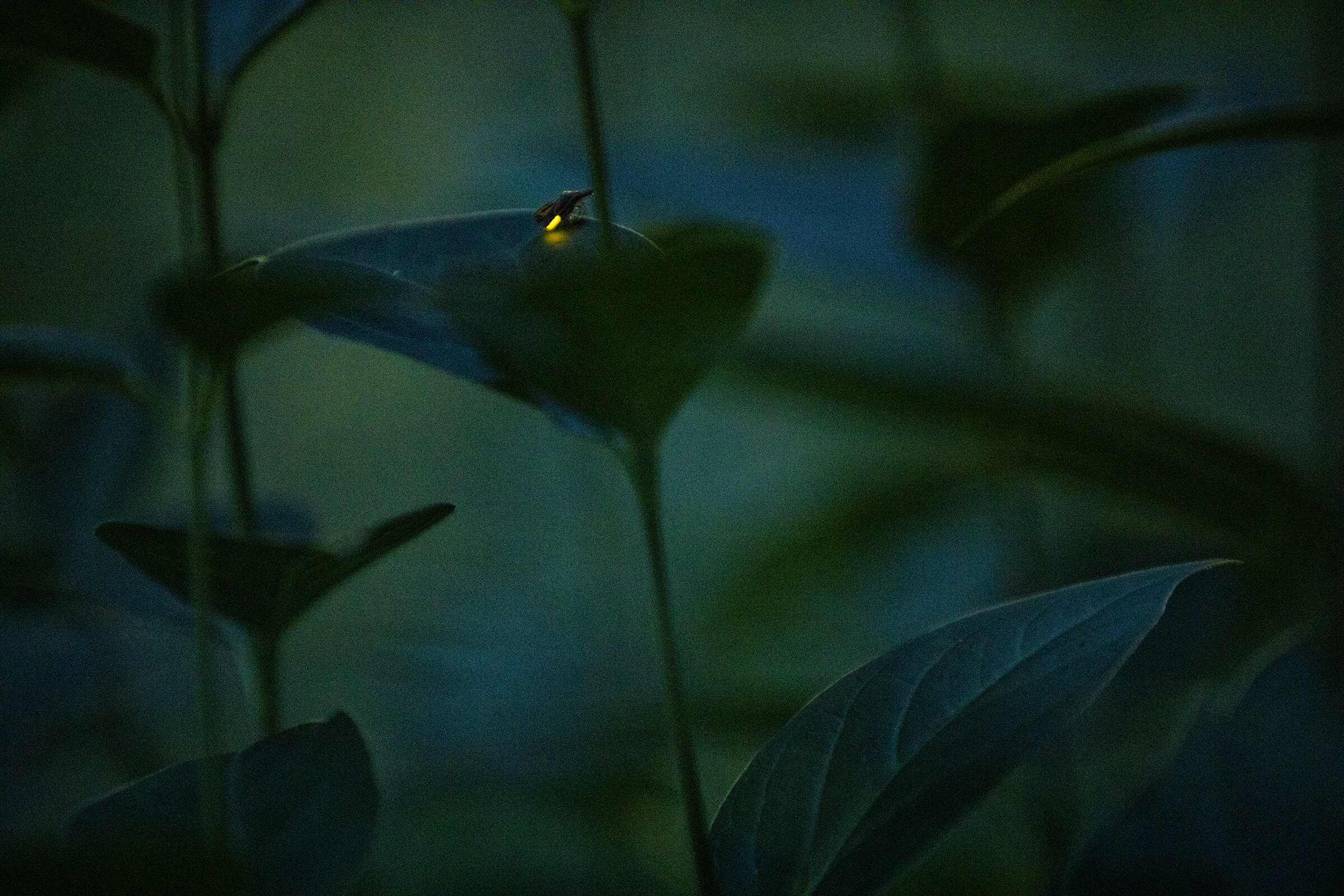
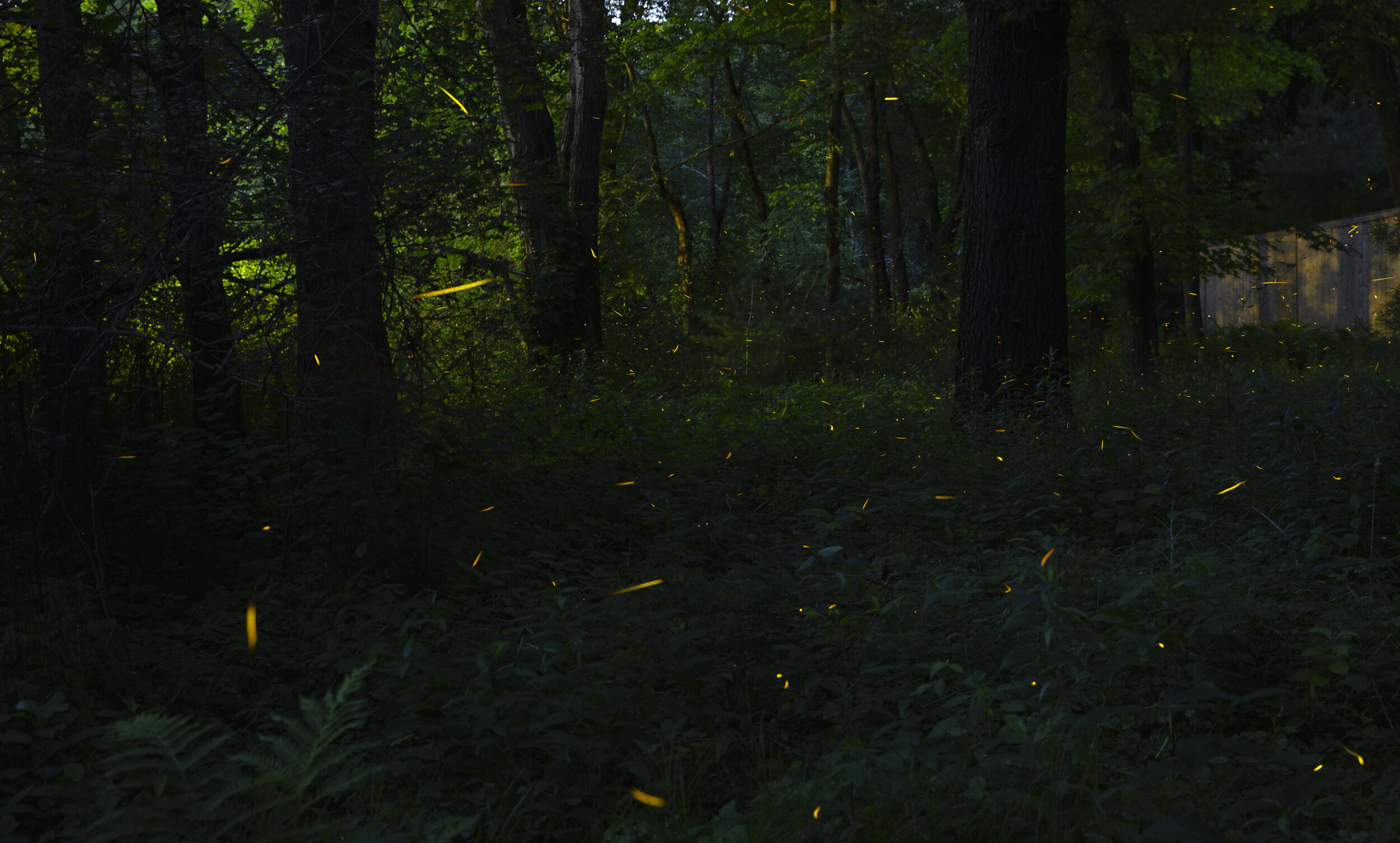
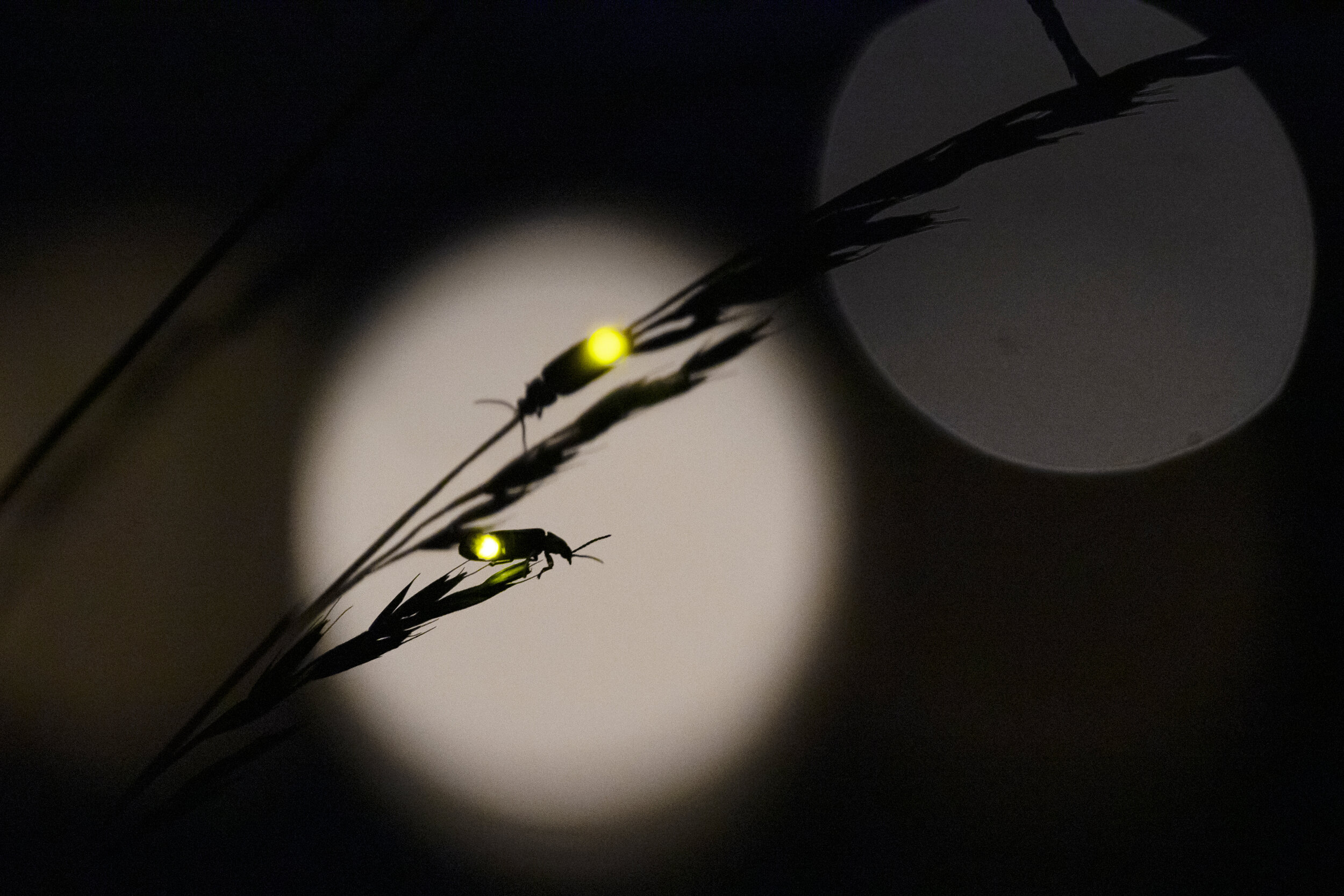
How to Help Fireflies
1. Create a firefly-friendly habitat just by letting your grass grow! And avoid using pesticides and herbicides.
2. Turn off your porch light and use curtains at night. Light pollution impacts fireflies’ ability to communicate.
3. Join Firefly Watch (link) to help scientists learn more about firefly populations and how to protect them.
To learn more about fireflies, check out Sara Lewis’ book, “Silent Sparks: The Wondrous World of Fireflies” (link)

